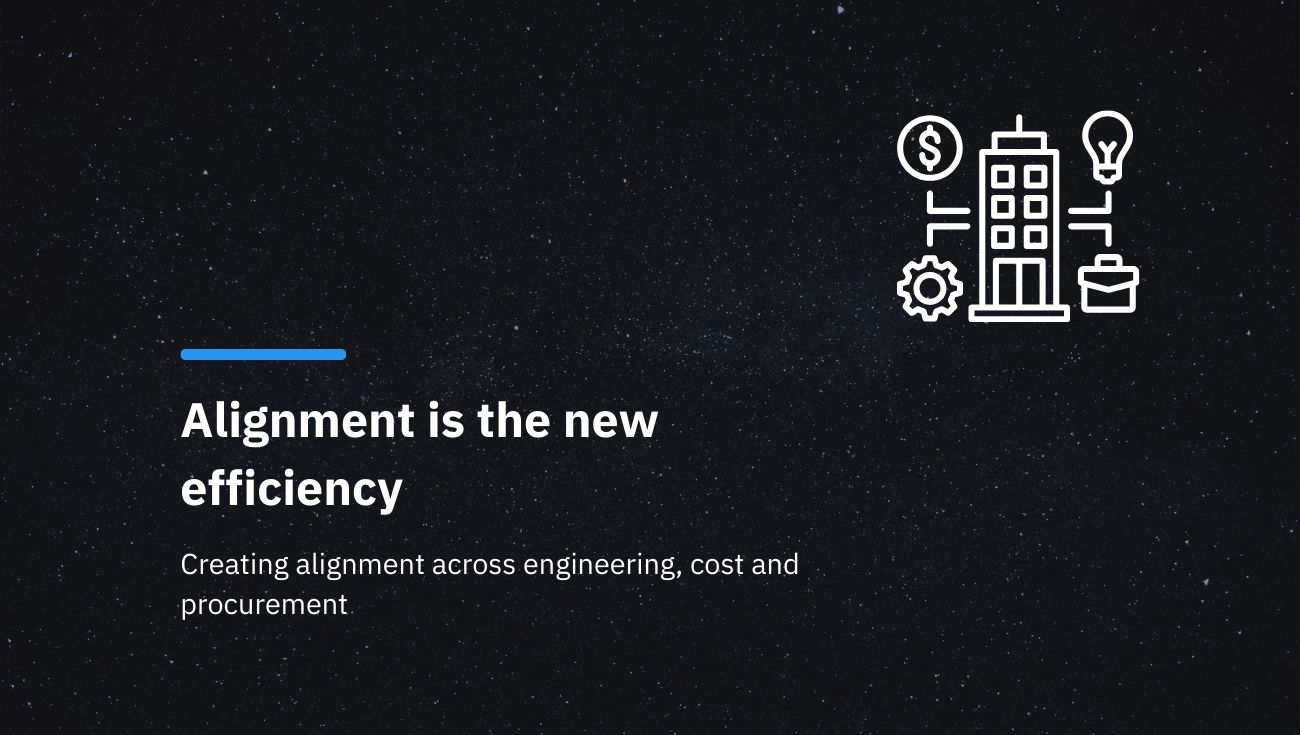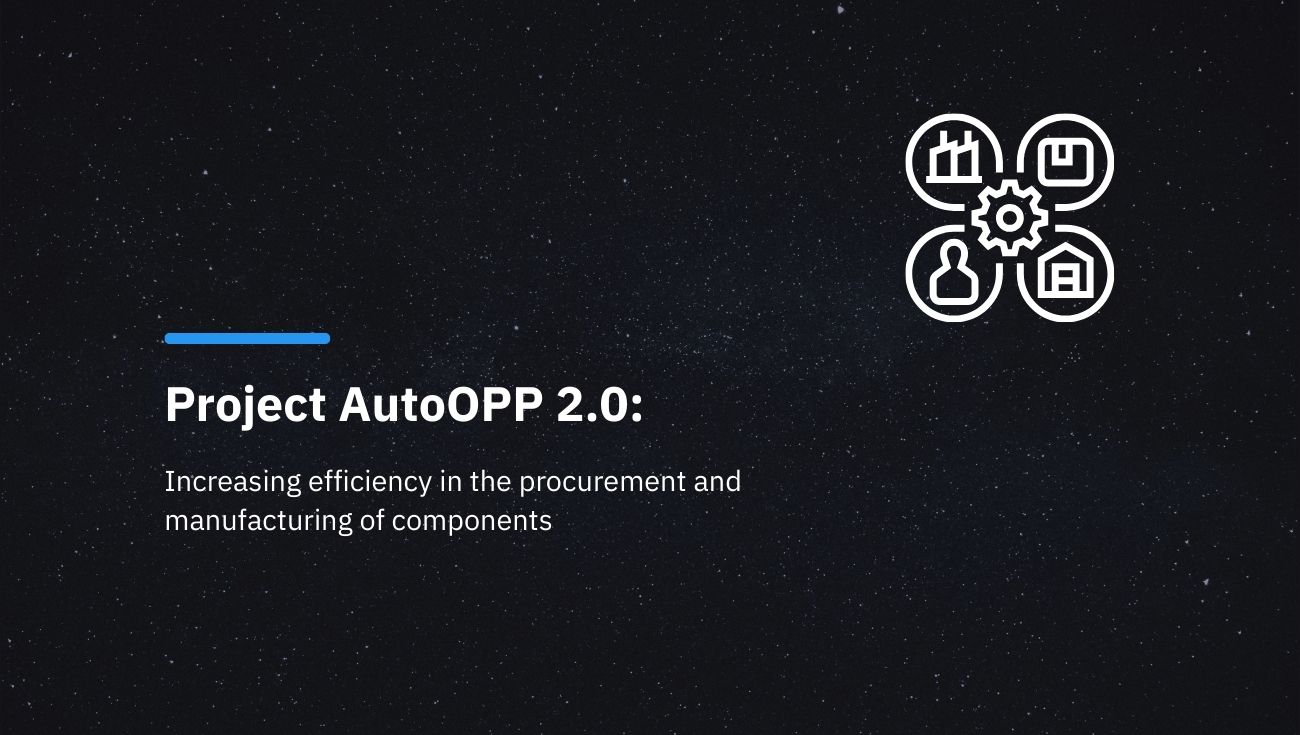Technical purchasing in mechanical engineering: The 10 biggest obstacles – and how to overcome them

Digital, AI-powered solutions solve specific problems
Processes, prices, partners: Technical purchasing in mechanical and plant engineering is a complex field. This is because each component is based on individual design data and must be procured to fit exactly. Obstacles include fragmented markets, opaque data structures, and knowledge that resides in people's heads rather than in systems.
In discussions with purchasing managers, ten challenges have emerged that slow down purchasing and make it expensive. The good news is that many of these problems can be solved in a targeted manner with digital, AI-powered solutions.
1. No time for strategy
More and more tasks, less and less time. This is the daily reality for many purchasing departments. Instead of thinking strategically, many purchasing managers are stuck in day-to-day business: processing orders, maintaining data, correcting errors. Software should actually make their work easier. In reality, however, data maintenance often becomes a never-ending task. This is especially true when ERP systems access incomplete or outdated information.
Traditional interfaces with suppliers are often expensive, complex, and difficult to maintain. Cloud-based purchasing solutions that intelligently link and automatically synchronize data are more promising. With the right platform, data quality can be maintained without having to manually touch every item. This not only creates transparency, but above all, it frees up time for strategic tasks.
2. Manual supplier selection is time-consuming
When purchasers receive parts lists and associated design data from the design department, they have to decide which regular suppliers to request the components from. Although many parts are already created in product data management and assigned to a material group, these groups are often too broad. A fine-grained classification would be more helpful, but it is extremely time-consuming. Imagine having to correctly assign 100 components from thousands of groups.
Artificial intelligence can help here. It automatically classifies the components into the appropriate material groups and links them directly to the corresponding suppliers. This makes a previously manual, error-prone process much more efficient and brings purchasing closer to the core business again.
3. Comparing offers is time-consuming
A classic scenario in technical purchasing: after sending requests to several suppliers, the quotes start rolling in, usually by email and often in very different formats. Then the real work begins: who offered what? Are the delivery terms acceptable? Are there alternatives or constructive changes?
Many of these questions still have to be answered based on gut feeling. Comparisons are often made in huge Excel spreadsheets. Transparency and time savings? Not a chance. Comparing offers thus becomes a mandatory task, but not a decision-making aid. Efficiency only arises when all offers are comparable: same conditions, same requirements, same structure. This turns a time-consuming process into a direct, well-founded decision.
4. Supplier knowledge is lost
What do I know about my suppliers? This question preoccupies many purchasing teams, especially when it comes to detailed knowledge beyond price and delivery time: reliability, response speed, quality, communication. Although there are numerous supplier relationship systems on the market, hardly any of them are considered truly practical by purchasers in mechanical and special machine engineering. The systems are often too generic or too maintenance-intensive. As a result, knowledge remains decentralized, spread across Excel lists, emails, and personal experience.
The solution lies in simple, smart tools that require minimal maintenance. A good system not only documents master data, but also learns: How often has this supplier been requested? Which parts were well manufactured, where were there queries? When maintenance runs in the background and is no longer a separate task, supplier management becomes a strength rather than a blind spot in the process.
5. Lack of price information for special parts
How much should a component cost? A seemingly simple question that, in practice, is often answered based on gut feeling alone. Purchasers lack reliable guidance, especially when it comes to non-standard, custom-made parts. Those with experience can make a rough estimate. Those who search the ERP system may find similar parts—but rarely the right context. After all, is the component found really comparable? Same quantity, same delivery time, same material? Often, the necessary transparency is lacking to derive reliable prices from historical data.
Modern systems offer a real alternative here. AI-supported price suggestions based on similar design data enable quick, informed decisions without manual research or uncertainty. This not only reduces the effort involved, but also gives the purchasing department the security of ordering at market-driven conditions.
6. Tedious supplier research
Finding suitable suppliers takes time. It usually starts with Google or portals such as “Wer-liefert-was” (Who supplies what). But these often lack reliable information: unclear manufacturing capabilities, no reviews, inadequate websites. Even if a potential partner is found, audits, confidentiality agreements, and lengthy consultations follow - before an inquiry can even be made.
This process could be made much simpler. Imagine a platform that bundles the knowledge of many buyers and anonymizes it in a practical and data protection-compliant manner. After uploading a design file, it shows the three best suppliers on the market with just one click. Sharing knowledge saves time and improves quality and security in procurement.
7. Lack of cooperation between departments and locations
For companies with multiple locations or corporate groups, decentralized purchasing is often a reality and, at the same time, a huge obstacle to efficiency. When each unit uses its own suppliers and maintains its own data, redundant processes and an unmanageable supplier pool quickly arise. The consequences are lost synergies, duplicate data storage, and rising process costs.
The key lies in change management. By consistently questioning existing structures, companies can bundle purchasing volumes, strategically consolidate suppliers, and evaluate data centrally. The potential for cost savings and process efficiency is enormous.
8. Constant deadline pressure
In mechanical engineering, there is often little leeway between the finished bill of materials and the delivery date. Purchasing has to procure all components in the shortest possible time. This involves sorting, gathering information, finding suppliers, and comparing offers. As already shown in the selection of suppliers and comparison of offers, this process takes up valuable time. There is usually no time left for renegotiation. In the end, purchases are too expensive, if anyone can deliver at all.
Many buyers would like to be able to place orders directly with a well-founded target price. This is made possible by systems that automatically generate supplier suggestions based on specialization, capacity utilization, and component requirements.
9. The best possible price is difficult to achieve
It is often unclear which supplier can manufacture a component most efficiently or what a realistic target price would be. Components are not procured at the best price, but at the next best price. The reason for this is a lack of specialization on the part of suppliers. The variance in the parts portfolio is too great. And purchasing departments usually lack the transparency needed to optimize in a targeted manner.
Intelligent bundling and market transparency provide a remedy. Those who recognize and group similar components can bundle volumes and assign them specifically to specialized suppliers. These suppliers, in turn, produce more efficiently, with less setup effort and better raw material purchasing. This not only results in better prices, but also more stable quality and leaner processes.
10. Poor data quality
In many discussions, poor data quality was cited as a key problem. At the same time, it can be assumed that those who do not mention it may not yet have recognized the potential of good data. But what actually constitutes good data? Well-maintained metadata, clear rules for new entries, intelligent supplier assignment, and transparent graduated prices form the basis for sound decisions. In practice, maintenance is often divided: technical information comes from design, commercial information from purchasing. Complex plug-ins can help, but they are expensive and often not an option for smaller companies. In addition, work is done quickly during stressful periods. This leads to component names getting mixed up, duplicates being created, and systems becoming unusable.
Modern AI systems automatically detect duplicates, standardize master data, and minimize manual errors. This creates a reliable database as the foundation for automation, transparency, and targeted savings.
Conclusion: Technical purchasing needs new tools
Whether it's data maintenance, supplier search, or pricing: many problems can now be solved faster, smarter, and based on data. The key lies in the intelligent use of your design and purchasing data.
Would you like to know what this could look like in your company?
Then talk to our expert Sebastian Freund - and find out where the greatest potential lies for you.
Arrange an expert consultation now.
Overcome Engineering Procurement Issues with PartSpace
Overcome Engineering Procurement Issues with PartSpace
Related Articles

Project CADistency: AI as a bridge between technical drawings and CAD models

Why Data Alignment Between Engineering, Cost and Procurement Teams Is Key to Quality, Savings and Supply Chain Resilience
